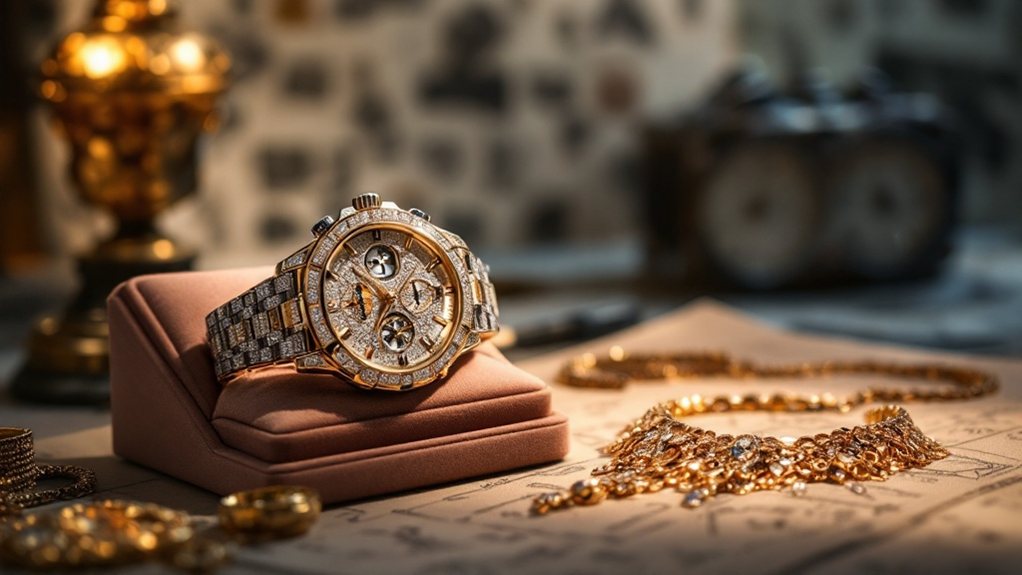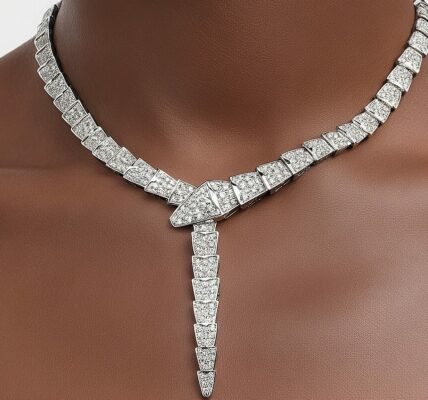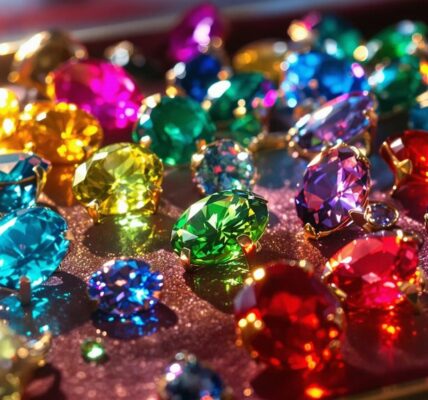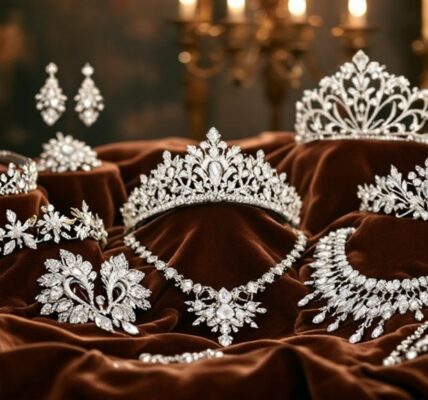Iconic Jewellery Houses and Their Designers: Piaget – From Watchmaking to Jewellery Excellence
Piaget's Journey: From Swiss Watchmaking to Jewellery Mastery
Piaget's transformation from a small Swiss watchmaking workshop in 1874 to a global symbol of luxury craftsmanship is a captivating story of innovation and growth. Known for its expertise in crafting ultra-thin movements, Piaget set new benchmarks in precision timekeeping before moving into the realm of high jewellery. Under the guidance of Valentin Piaget, the brand broadened its scope, introducing intricate gold artistry and pioneering techniques in gem-setting and enamelling. As part of the Richemont group, Piaget remains influential with its daring designs and enduring legacy. What motivated this successful transition from watches to jewellery?
Piaget's evolution was driven by a desire to push the boundaries of craftsmanship and design. The brand's commitment to excellence and innovation allowed it to seamlessly integrate the precision of watchmaking with the artistry of jewellery creation. This shift was not just about expanding their product range but about reimagining what luxury could be. By focusing on quality and creativity, Piaget has managed to maintain its prestigious status in both the watchmaking and jewellery sectors.
As Valentin Piaget once said, "Innovation is the heart of our craft, and creativity is its soul." This philosophy continues to inspire the brand as it navigates new challenges and opportunities in the luxury market.
Article Contents
Main Highlights
Piaget: From Timepieces to High Jewellery
Piaget's evolution from a watchmaking company to a leader in high jewellery began with the opening of their first boutique in Geneva in 1959. Under the guidance of Valentin Piaget, the brand shifted its focus to jewellery watches, integrating intricate techniques such as gem-setting, engraving, and enamelling.
One of Piaget's distinctive contributions to jewellery design is the Palace Decor technique. This method involves detailed gold engraving, which has become a hallmark of their exquisite craftsmanship.
As Piaget grew, it transformed into a global luxury brand, establishing numerous boutiques worldwide and becoming part of the Richemont group. The brand's Essence of Extraleganza Collection is a testament to its commitment to bold designs and superior craftsmanship in jewellery.
Reflecting on Piaget's journey, Valentin Piaget once said, "Our creations are not just objects; they are a celebration of artistry and passion."
Founding and Early Development
Founding and Early Development
In 1874, Georges-Édouard Piaget established his first workshop on his family's farm in La Côte-aux-Fées, located in the Swiss Jura mountains. This picturesque area, over 1000 metres above sea level, was where Piaget's watchmaking journey began.
The Piaget family had strong connections to this serene environment, which played a significant role in fostering Georges-Édouard's love for crafting timepieces from a young age. This initial workshop wasn't just a place of work; it was a haven for creativity and precision. The workshop later moved to the ground floor of the La Côte-aux-Fées chapel in 1890, marking an important step in Piaget's establishment.
The motto "Always do better than necessary" was not merely a guiding principle but a testament to the relentless pursuit of excellence. Georges-Édouard Piaget's expertise in creating ultra-thin escapements set a new standard in watchmaking craftsmanship, which further established the brand's reputation for precision.
At the start, the workshop specialised in creating pocket watches and high-precision clock movements. This marked the beginning of what would evolve into a prestigious legacy in luxury watchmaking.
The Piaget family's hands-on approach ensured that each piece was made with dedication and meticulous attention to detail. Georges-Édouard's vision laid the groundwork for the brand's lasting commitment to quality, paving the way for future generations to build upon this legacy.
This early chapter in Piaget's history exemplifies the harmonious blend of tradition and innovation that continues to define the brand today.
As Georges-Édouard once said, "Precision and dedication are the twin pillars of true craftsmanship."
Innovations in Watchmaking
Pioneering the Art of Ultra-Thin Watchmaking: Piaget's Legacy
Piaget has consistently pushed the limits of watchmaking, particularly in creating ultra-thin timepieces. With a rich history in crafting minimalistic movements, Piaget demonstrates an unwavering commitment to innovation.
In 1957, Piaget introduced the Calibre 9P, a mere 2 mm in thickness, setting a new benchmark for hand-wound movements. This achievement was surpassed in 1960 with the Calibre 12P, a micro-rotor masterpiece that earned the Guinness World Record for the thinnest automatic movement at just 2.3 mm. Known for its use of a 24-carat gold micro-rotor, the Calibre 12P revolutionised watch design, offering both efficiency and elegance. Piaget's pioneering work in ultra-thin watchmaking has reinforced its reputation as a leader in this field, consistently introducing innovative designs and techniques that captivate horology enthusiasts.
Recently, Piaget has continued to lead in this niche. The Calibre 430P and Calibre 1200P, launched in 2017, highlight this ongoing dedication, with the latter maintaining the tradition of ultra-thin self-winding movements at 2.35 mm.
However, the standout piece is the Altiplano Ultimate Concept, unveiled in 2020. This extraordinary feat of engineering is recognised as the world's thinnest mechanical watch, measuring only 2 mm.
By integrating the watch case and movement and utilising cutting-edge materials, Piaget showcases its expertise in ultra-thin craftsmanship, continually redefining what's possible in horology.
As Jean-Claude, a renowned horologist, once said, "Piaget doesn't just make watches; they create milestones in watchmaking history."
Transition to Jewellery Craft
Piaget's Journey into the World of High Jewellery
As Piaget cemented its legacy in crafting ultra-thin watches, the brand broadened its scope by embracing the art of high jewellery. This significant transition was marked by the opening of Piaget's inaugural boutique at 40 Rue du Rhône, Geneva, in 1959, introducing the brand's exquisite adornments to a wider audience.
By the late 1960s, Valentin Piaget led a creative studio focused on jewellery watches, bringing on board designers adept in jewellery craftsmanship. This strategic decision allowed Piaget to incorporate gem-setting, engraving, and enamelling into its watch designs, transforming them into symbols of luxury. Known for its ultra-thin movements, Piaget's mastery in engineering and design extends beyond timepieces, as demonstrated by their ability to create intricate jewellery that complements their watches.
Piaget's dedication to using precious materials such as gold and diamonds, along with unconventional elements like titanium, solidified its reputation in haute horology. The development of the Palace Decor technique, which involves intricately engraving gold bracelets, exemplifies Piaget's commitment to craftsmanship.
Additionally, the revival of the medieval chainmail technique allowed for the creation of flexible, delicate gold bracelets that are both innovative and timeless.
Piaget's expertise in goldsmithing and bracelet making was further enhanced by incorporating a dedicated goldsmithing facility into its workshop in the early 1960s. Collections like Piaget Aura and Protocole showcase the brand's expertise in gem-setting, turning timepieces into breathtaking works of art. Piaget's shift towards jewellery craftsmanship has set a new benchmark, seamlessly blending the precision of watchmaking with the allure of luxury jewellery.
As Jean-Claude Piaget once said, "In every piece we create, we strive to capture the essence of elegance and innovation, crafting not just a watch or jewellery, but a timeless story."
Milestones and Achievements
Piaget's Journey in Horology and High Jewellery
Originating modestly in 1874 as a Swiss watch movement manufacturer, Piaget has evolved remarkably to become a leader in both watchmaking and high jewellery. The brand made a significant leap in 1957 with the introduction of the Calibre 9P, a groundbreaking thin movement that set new standards in the industry. In 1960, the unveiling of the Calibre 12P further solidified Piaget's status, achieving the title of the world's thinnest automatic movement, measuring just 2.3mm in thickness — an impressive testament to their expertise. By the 1990s, Piaget had expanded its offerings to include fully-fledged jewellery collections, further enhancing its reputation in luxury craftsmanship. As Piaget continues to innovate, its ultra-thin craftsmanship remains a hallmark of its legacy, captivating enthusiasts and collectors alike.
In 2003, Piaget ventured into High Jewellery, showcasing their proficiency in gold craftsmanship and intricate gem-setting techniques. Their meticulous "jupon" setting and medieval-inspired chainmail design underscore their dedication to quality. These advancements have enabled Piaget to broaden its international footprint, with a network of 134 boutiques showcasing their exceptional creations. As Piaget nears its 150th year, the brand continues to lead the luxury sector, recognised for its bold designs and the Essence of Extraleganza collection. The anticipated presentation at Watches and Wonders 2024 is expected to further build on their distinguished heritage, seamlessly blending tradition with modern innovation.
*"Piaget's legacy is not just about precision but also about the art of creating beauty in every piece," says a renowned watchmaker.*
Legacy and Continued Influence
Piaget: A Legacy of Precision and Elegance
Piaget, a name synonymous with precision and elegance, has left an unforgettable mark in both watchmaking and high jewellery. Founded in 1874 in the tranquil Swiss village of La Côte-aux-Fées, Piaget initially caught the attention of horology enthusiasts with its pocket watches and ultra-thin movements.
The introduction of the Calibre 9P in 1957 exemplifies the brand's innovative spirit, setting new standards in the industry and solidifying its reputation for luxurious elegance. This legacy expanded in 1959 when Piaget ventured into high jewellery, embracing asymmetry and mixed stone cuts, attracting style icons such as Sophia Loren and Elizabeth Taylor. In the 21st Century collection of 1969, Piaget combined watchmaking and high jewellery with graphic and textured gold work, showcasing its commitment to blending artistry with technical excellence.
The brand's legacy continues to flourish through its unique fusion of traditional craftsmanship with modern technology. Piaget's creations are frequently seen on glamorous red carpets, symbolising not only luxury but the height of artistic expression. Each piece reflects a commitment to merging exceptional craftsmanship with artistic expression, transforming metal and stone into fluid, dynamic forms.
In celebration of its 150th anniversary, Piaget unveiled the "Essence of Extraleganza" collection. This collection is a testament to Piaget's mastery in goldsmithing and colour artistry. Each piece, representing timeless sophistication, highlights Piaget's steadfast dedication to excellence, allowing wearers to stand out as icons of freedom and elegance.
Piaget's lasting influence is evident as it consistently pushes boundaries in high jewellery.
"Piaget doesn't just create jewellery; it crafts dreams, turning precious materials into timeless art."




